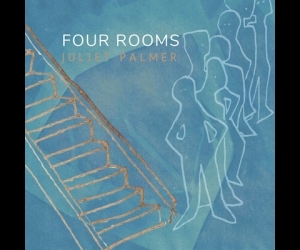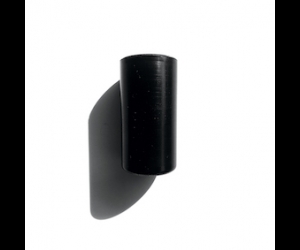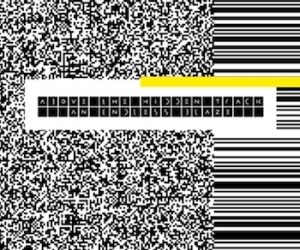
Since 2010, Cluster New Music and Integrated Arts Festival in Winnipeg has been offering an annual space where musical inspiration meets modern technology and interdisciplinary art. Its tenth edition featured nearly three dozen artists presenting performances, installations, lectures, and workshops; while not explicitly stated as such, issues of identity, representation, and art as an instrument of resistance were clearly prioritized this year. Aside from a six-hour session of activities and workshops on the issue of diversity in new music, a postfestival workshop entitled “Decolonizing Sound: Presence and Liberation,” left little question about the appetite of the organizers for the topic.
The festival opened with a performance of Foxconn Frequency (no. 3) – for three visibly Chinese performers that will probably not be forgotten by anyone who was there. One major reason is that the technology at play simply made for a nearly overwhelming sensory experience, with the musicians (Natalie Tin Yin Gan, Vicky Chow, and Matt Poon) seated at workstations with keyboards and video cameras pointed directly at their faces so images of them could be projected, along with that of a timer. A subtle outcome was the visual recursive loop created by a camera facing its own projection, an Escher-like effect that hinted at the many conceptual layers at play.
Foxconn Frequency (no. 3) incorporated prompts and scoring in the style of video games, while evoking the conditions of assembly-line jobs by way of a frenetic pace enforced by a running clock and the panopticon effect of cameras projecting images of the players’ furrowed brows and pursed lips in real time. There were just a few fleeting pauses during which a running tally of each player’s failures was on display. Conversely, the only marker of success was the immediate commencement of the next task.
The music inevitably amounted to a series of short drills, countless false starts, and repeated attempts to satisfy the precision demanded by the machine. The audience became audibly invested in a cooperative task involving all three players, moaning in sympathy after witnessing the group inch to the brink of completion before something was missed and they had to restart. Once the task was finally completed, after a computer crash and roughly fifty attempts at the three-person exercise, the entire room was able to exhale . . . though only for the brief moment it took to notice that the next job was already underway. The work was exhausting, though quite incredible in its conceptual ambition.
Cluster makes room every year for works from its directors Elliot Britton, Luke Nickel, and Heidi Ouelette. This year Britton collaborated on an audiovisual installation with his aunt Susan Britton, which featured Elliot’s musical accompaniment to numerous screens of various styles looping video pieces Susan created over three decades ago investigating mass media, consumer culture, and corporate ideology.
Further, eXperimental Improv Ensemble (XIE) was tasked with creating live soundtracks to video works Susan Britton created in the 1980s. XIE displayed aptitude on various implements and instruments, but it was mostly unclear what connection their sounds had with the videos. At times, the group was also playing over, rather than with, one another—body language and musical interactions suggested a dearth of space for some ideas to make their way to the fore. The performance ultimately suffered from too many moments that sounded more like eight individuals who happened to be in the same room, rather than a cohesive unit working together.
TAK is an ensemble of young players who have rapidly garnered a sterling reputation, and their Cluster performance was a bold exclamation point on the festival. The New York-based group performed seven pieces, many demanding, with the almost casual swagger for which the players are known. A brief intermission almost allowed the assembled crowd to find its breath again before the ensemble returned to perform Series Imposture.
Soprano Charlotte Mundy was called upon to muzzle her mouth with her hand between bursts of increasingly insistent vocalizations, in symbolic representation of the participants in the famous Rosenhan Experiment (conducted in the early 1970s to test the reliability of psychiatric diagnoses), which composer David Bird cited as inspiration for the piece. Although the opening minute suggested that percussion might define the piece, it was in fact Carlos Cordeiro’s probing clarinet that anchored some deceptively meandering strolls taken by the other instrumentalists.
The very next piece was Taylor Brook’s Amalgam, which explored its eponym by way of the quintet uniting their instruments in ways both obvious and obfuscated. One excellent run brought about interplay between the clarinet and flute that suddenly sounded like the drone of a resonant bell bouncing about the room.
After TAK packed up, those in the crowd who did not mind a walk made their way to a nightcap: guest curator Andrea Roberts programmed synth performances from a pair of solo artists at The Output, a year-old venue that has made itself a supportive space for experimental sound performance. Mirror Frame offered a generative piece to the hometown crowd before pleading exhaustion and lying down on the floor while a beat-driven recorded piece played. The night closed with whirring modular synth work from Beast Nest.
A mid-afternoon show closed out Cluster, with emerging local artist Davis Plett performing Etudes for Keyboard, a merging of glitch music, typing tests, and poetry, which envisioned a world where office jobs are not about hierarchical power and demoralization. It seemed obvious to think back to Foxconn Frequency (no.3), and the two mapped a terrain of social conscience just similar enough to seem like natural bookends.
PHOTO: Erin Gee's Machine Unlearning, presented at the 2019 Cluster New Music and Integrated Arts Festival.
PHOTO BY: Leif Norman


